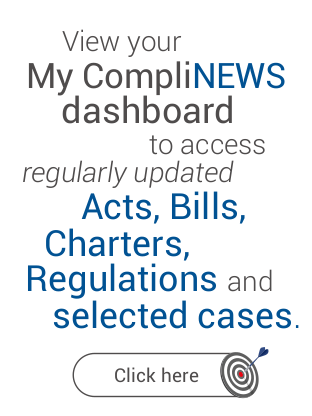Drawing up an organogram
Publish date: 03 May 2019
Issue Number: 69
Diary: CompliNEWS
Category: General
By Lee Rossini
An important aspect of strategic planning is drawing up an organogram. An organogram consists of an organisational chart which depicts the structure of the business and the connection between the roles within the business. The diagram or chart graphically shows the relationships among superiors, departments and subordinates, including who reports to whom and who is responsible for what in the business. An organogram can take any shape or form and can be tailor-made to suit the needs of a business. When drawing up a chart, it is universally accepted that the CEO or business owner is at the top of the chart, followed by departments or functions, followed by other roles within the departments or functions, listed according to rank. Boxes, circles, rectangles or squares are used to represent the different roles, and lines are drawn between these to demonstrate the relationship between roles, departments and/or functions.
The benefit of an organogram is that it presents a single, visual overview of the business and it clearly demonstrates the chain of command within the business. An organogram provides an opportunity to identify:
- where a component may need additional staff;
- if the business is top heavy at a senior management level; or
- where the roles that fall within a component should be reduced.
Although a visually useful management tool, there are limitations in using an organogram. If there are regular staff changes, the organogram may be out-of-date very quickly. The chart only considers the formal relationships within the business and usually fails to consider the informal relationships. The chart seldom includes any horizontal relationships or the relationships that clients have with the business.
There are many different forms of organograms that can be used: centralised, linear, horizontal, traditional, or matrix, some of which are better suited to a certain type of business. The traditional line organogram is drawn up with the roles structured in a hierarchical fashion. Although small businesses use this version due to its simplicity, it is regarded as a rigid structure with little information exchange between the top of the business and the bottom. This chart is typically used in bureaucratic businesses where there is little or no collaboration.
A functional (or by department) organisational structure is derived from the line structure where employees in an area need to report to all the directors. For example, an employee in the compliance department may be called upon by the HR manager to handle a matter related to this area. This organisational structure is the most commonly used version. However, the chart that is probably most suited to a financial advice business is the line-and-staff organogram where the staff report to the directors and the CEO or owner. It is like the line structure but with a variation. As the staff report to the directors and CEO or owner, they play a far more active role in the business by advising, giving opinions, making reports and generally supporting the business. This version is used where CEOs or owners and directors provide technical advice to assist employees who are client-facing and handle or manage day-to-day operations.
In conclusion, the organogram is extremely useful in presenting an overview of the roles to one another and to the business. As such, a well-drafted organogram is an excellent tool to demonstrate the division of the whole into its various components thereby providing the members of the business with a visual image of where they fit into the business.






